“That connection of handwriting, telling a story in sequence, where you use words and pictures to tell a story, is a very strong connection.”
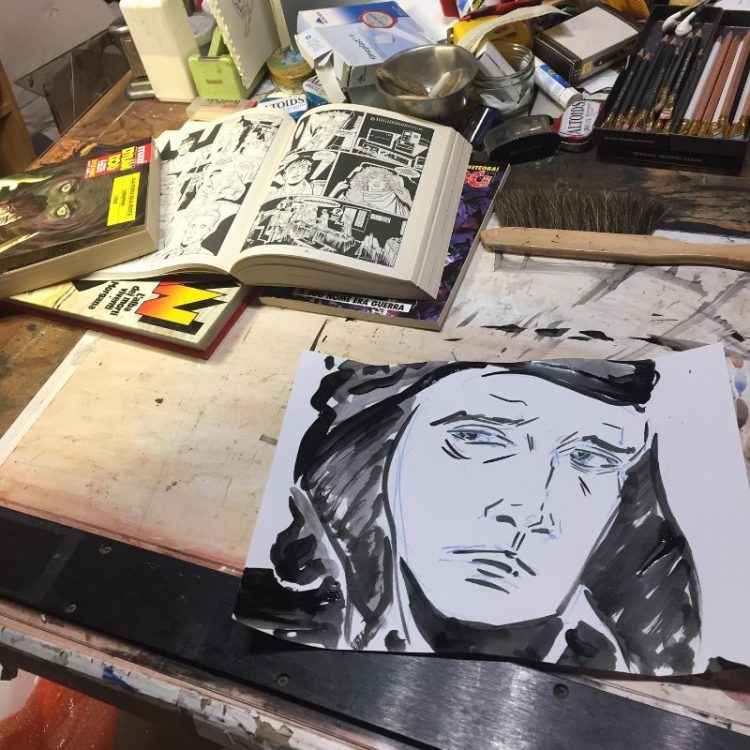
George considers the Connections
Over the years, as George looked through all of the amazing manuscript art inspired by the Divine Comedy, which would inform his own complete version of the poem, he realized the connection between the art of the Commedia and comics. Just like early editions of the poem, a comic tells a story using words and pictures in sequential order.
Interested in the whole story of how “La Divina Commedia – The New Manuscript” came to be? Check the index of articles here.
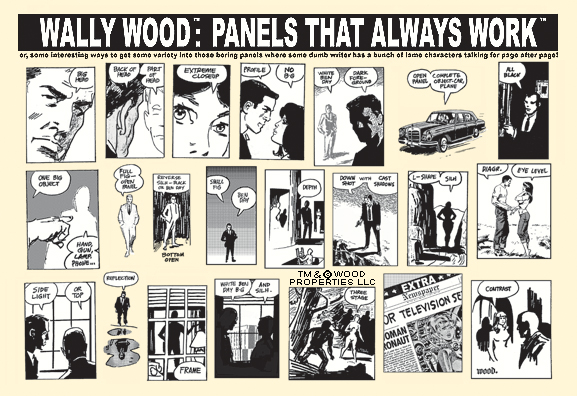
That connection of handwriting, telling a story in sequence, where you use words and pictures to tell a story, is a very strong connection.
Throughout his creative journey, George considered other connections between comics and the Divine Comedy. Dante strives to present a full range of emotions, often with physical descriptions that are very evocative; the natural entry point for an artist to step in and illustrate that expression.
Considering Dante’s own experience of books in his own time (medieval illuminated manuscripts as we know them today), many have imagined that Dante envisioned his poem with pictures around it.
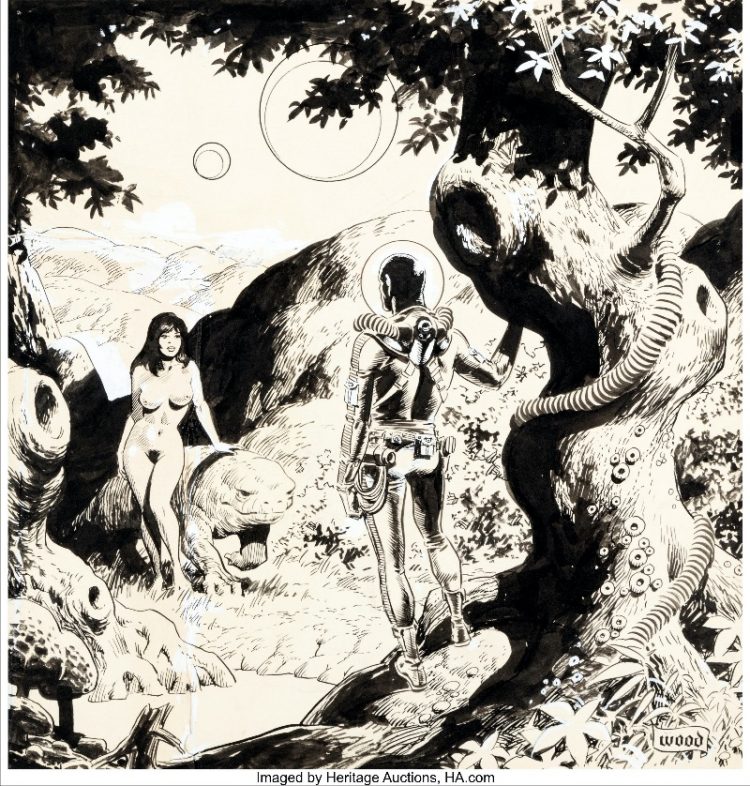
Comics, Monsters and Demons
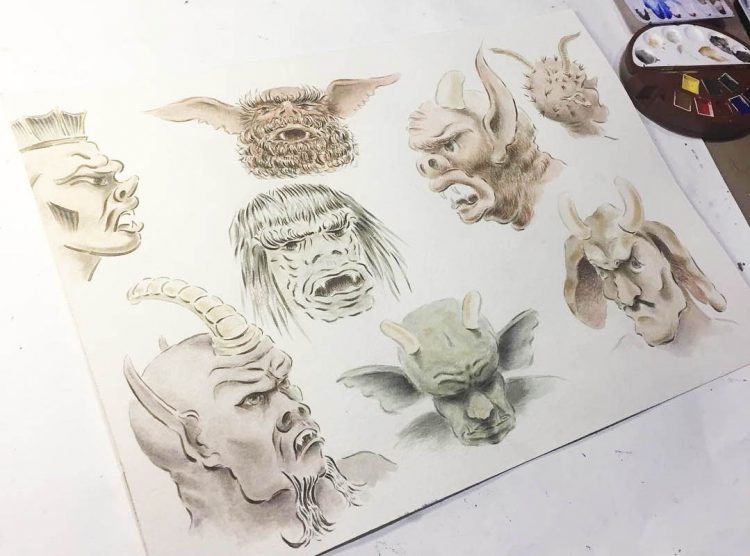
Dante’s landscapes in Inferno, Purgatorio, and the earthly paradise at the end, are rich with opportunities for an artist’s imagination to run wild and include all kinds of things. In George’s case, he uses this opportunity to reference comic art in creative ways when he can.
One way he achieves this is through his placement of demons and monsters throughout his Divine Comedy, a true tribute to the comic book genre. For example, when Dante and Virgil arrive at the city of Dis, in George’s Inferno, there are demons guarding the city wall. One special appearance includes Jack Kirby’s demon created for DC comics in the 1970’s.
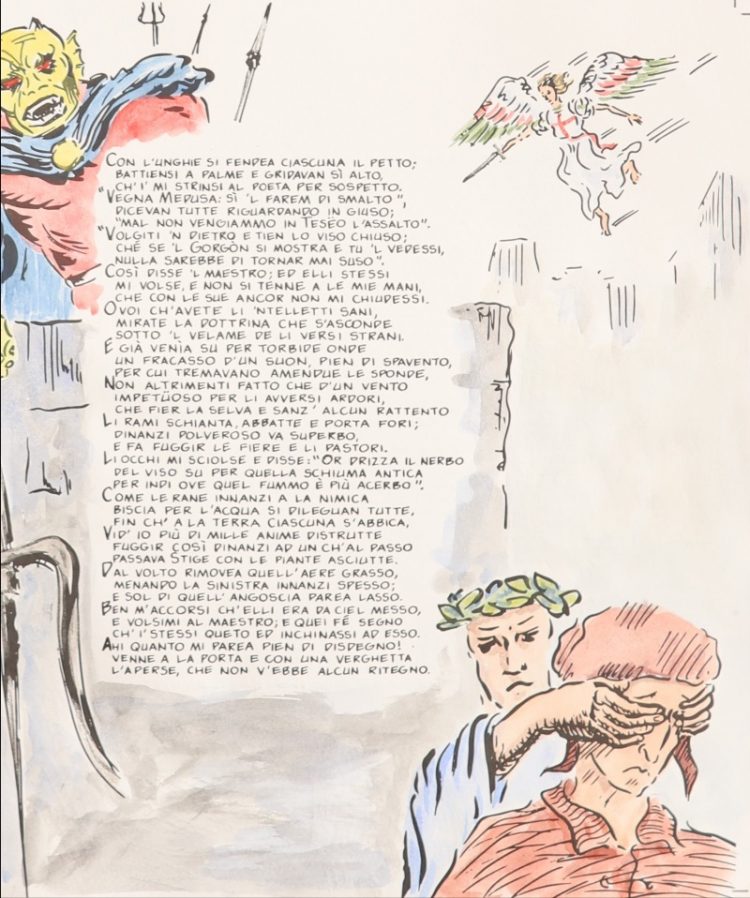
Wallace Wood’s 22 Panels That Always Work
Foundational to the design of George’s artwork is Wallace Wood, one of the most important American comic book artists and hugely influential during the 40s and 50s, who George quotes throughout his work. Borrowing from Wood’s compositional studies, “Wallace Wood’s 22 panels that always work,” George learned where to put figures in a room, how to divide space, how to use light and shadow within a sequence, and how to compose an interesting comic book picture. Borrowing from Wood’s assemblage of solutions, George used these techniques as a way to make his images and his version of the Commedia even more engaging.
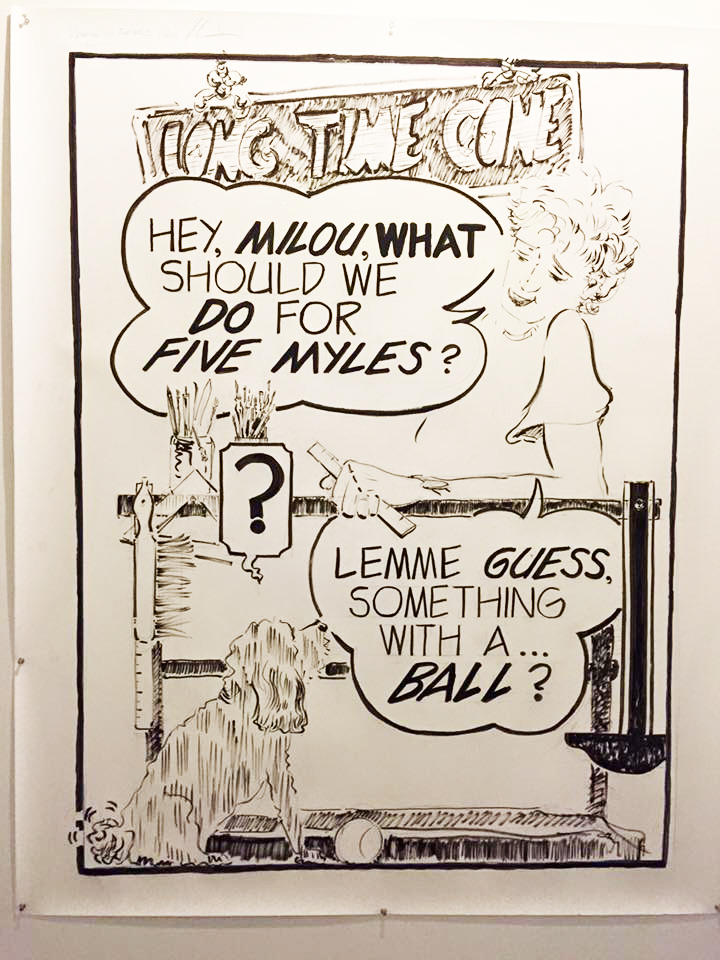
Using extreme cropping, I like to show just a sliver of the face visible at the edge of a page to bring the viewer right in close to Dante’s perspective. I want the reader to experience the poem from Dante’s eyes.
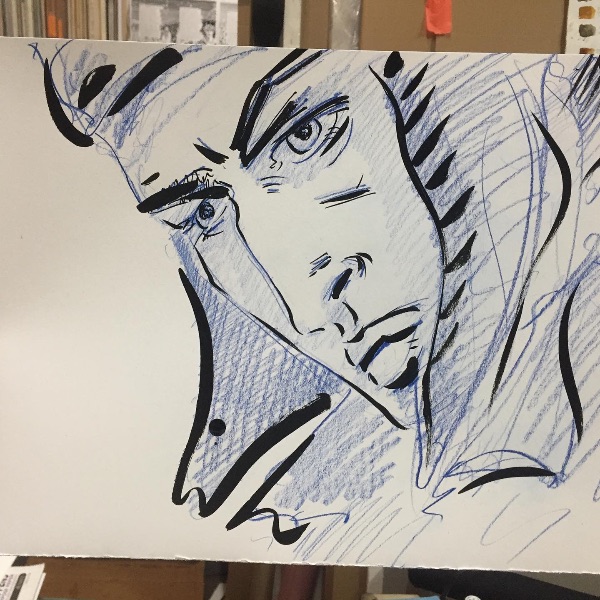

Although there are similarities between comics and illuminated manuscripts, there are also big differences to consider, but George doesn’t let this hold him back from giving us a fresh take on this classic work. A visible difference in his new Divine Comedy compared to others will be the first-person experience; experiencing the book through Dante’s eyeswill be a new experience for readers. To bring viewers in, George takes advantage of close-up shots, similar to what we see in cinematography and in comics. For example, when Dante experiences blindness at the start of Canto 4, in Inferno, George wants the viewer to have that experience as well. Rather than illustrate Dante having the experience of blindness surrounded by his environment, George draws him looking down with nothing there, and we get a piece of him experiencing the inability to see anything.
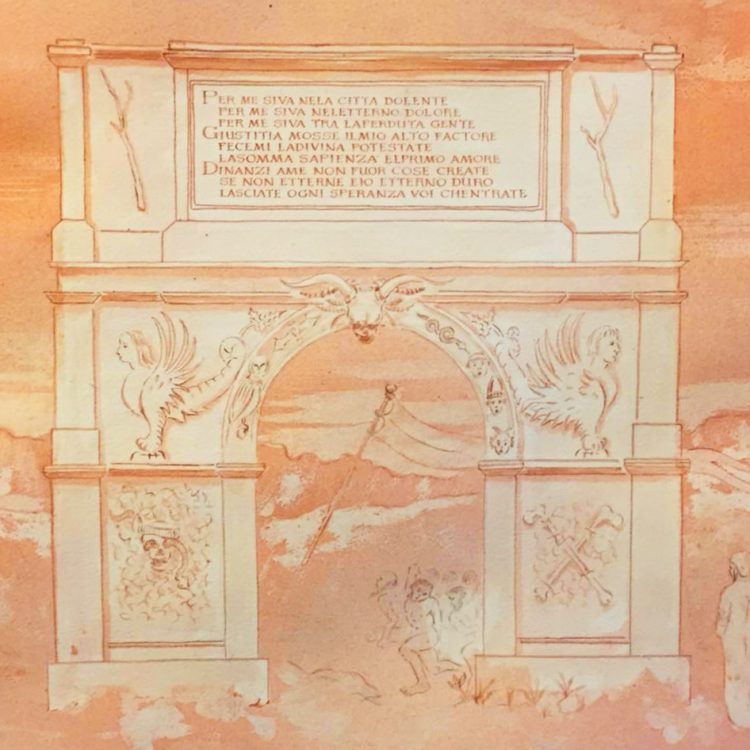
Are You Ready to Experience the Divine Comedy Through Dante’s Eyes?
The chance to experience George’s fresh take on the Divine Comedy is close at hand. But without modern day patrons like you, this work of a lifetime will remain unpublished.
Stay tuned as we prepare for the launch of our upcoming Kickstarter, so that you, too, can experience the Divine Comedy through Dante’s eyes!
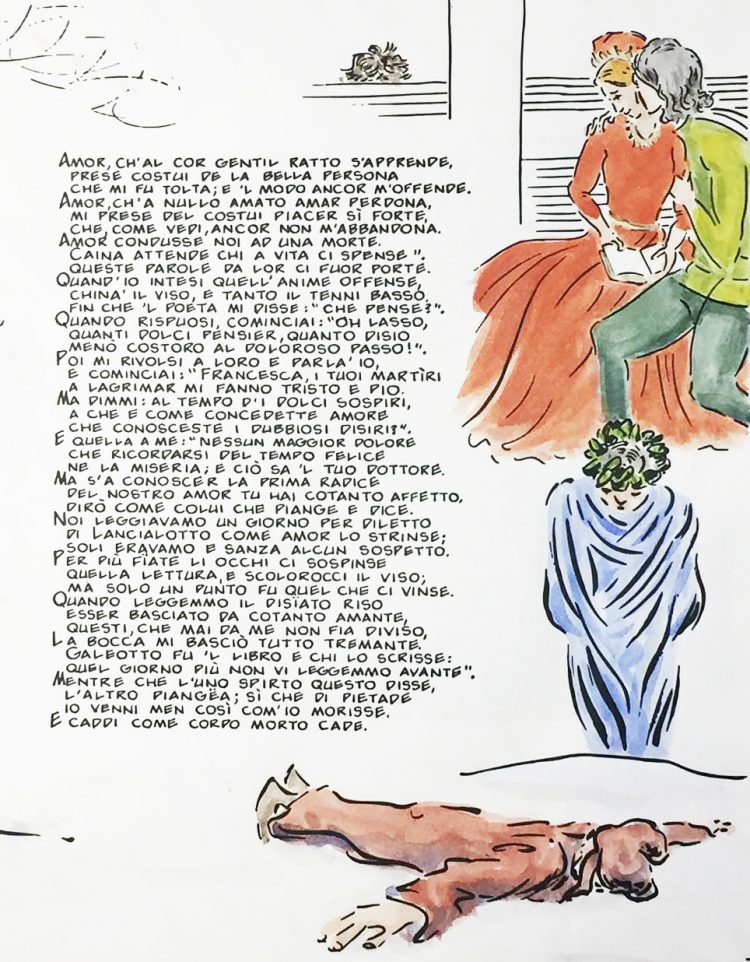
Don’t Miss Out!
Interested in the whole story of how “La Divina Commedia – The New Manuscript” came to be?
1. George Meets Dante: The Love Story & The Passion Project
2. A Monk in New York: A Journey Back in Time
3. On The Shoulders of Giants: One Man + 700 Years of Art Inspired by Dante
4. The Commedia & Comics: George Considers the Connections (you are here)
5. The Artist as Scribe: 350.000 Characters Later…
6. Illustrating the Commedia: Dante’s Color Library
7. Exclusive Book Design Preview: Handcrafted in Italy & Thoughtfully Designed by Giulia Fogliani

